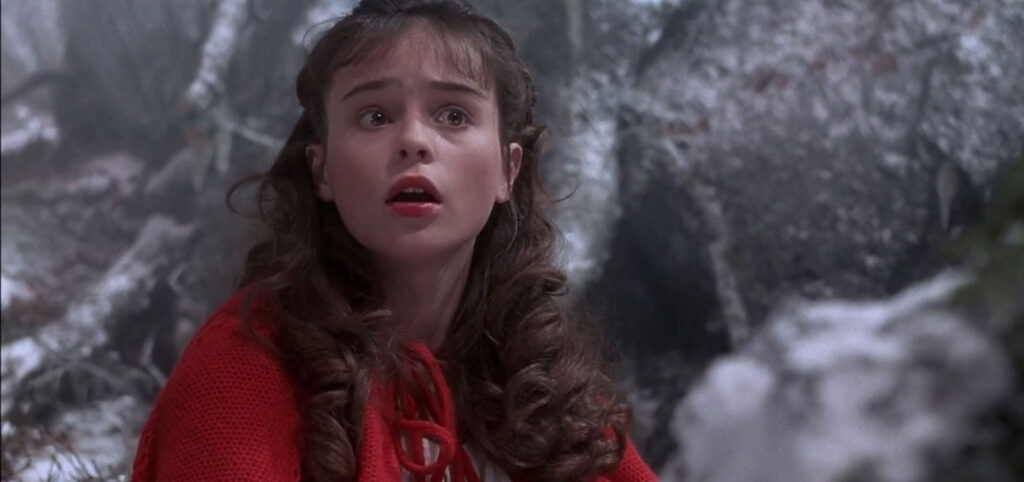
Angela Carter’s collection of short fiction stories The Bloody Chamber set out to re-tell a number of folktales and fairytales with their latent feminism reoriented to be central to Carter’s text. This endeavor was replicated by Carter in the film adaptation of a number of the stories included in The Bloody Chamber; The Company Of Wolves (1984). Carter co-authored the screenplay of The Company Of Wolves with director Neil Jordan who wanted to make a more intellectual werewolf film in reaction to The Howling (1981) and An American Werewolf In London (1981).
In order to link Carter’s stories together a series of framing devices were employed that also serve as a kind of commentary on the educational aspect of the classic oral traditions responsible for the folktales that first inspired Carter. The film begins by establishing that the bulk of the film takes place within the dreams of the young girl Rosaleen (Sarah Patterson). Within the dream Rosaleen is a Red Riding Hood character whose grandmother’s (Angela Lansbury) stories serve as a second framing device. In the last act of The Company Of Wolves Rosaleen, no longer a child, takes over this role of storyteller.
For Carter werewolf myths are a metaphor for misogyny and patriarchal social structures. The stories that Rosaleen’s grandmother tells are meant to prepare her for the treachery of men as she comes of age. But The Company Of Wolves is never a study of victimization. As Rosaleen’s mother (Tusse Silberg) puts it “If there is a beast in men, then there is a beast in women that is its equal”. This line is the thesis of The Company Of Wolves as well as Carter’s interpretation of these classic folktales.
For the visual execution of The Company Of Wolves, Neil Jordan seemingly turned to the fairytale films made by Deutsche Film-Aktiengesellschaft (DEFA) in the late fifties that often aired on British television during Jordan’s childhood. The Company Of Wolves looks like a storybook illustration come to life. There’s a subtle menace to the sets that captures a childlike sense of wonder, imagination and fear of the natural world. In this expressionistic milieu of extravagant sets, Jordan pays visual homage to other fairytale films such as Viy (1967) and Valerie & Her Week Of Wonders (1970).
The Company Of Wolves manages to be both a children’s fairytale film and a horror film while never truly being either. The inability of marketers and critics to easily label The Company Of Wolves has led to the film’s relative obscurity. The Company Of Wolves is a kind of cult classic that die hard horror fans often overlook and that mainstream audiences ignore.
